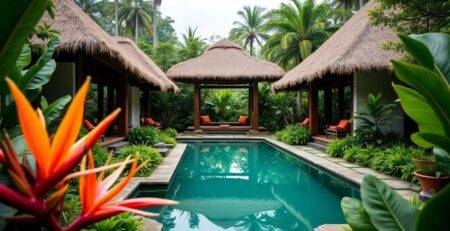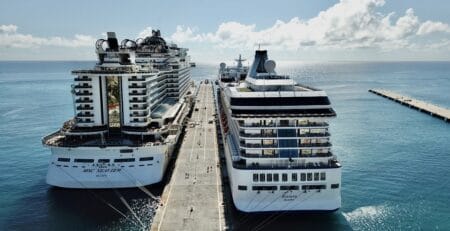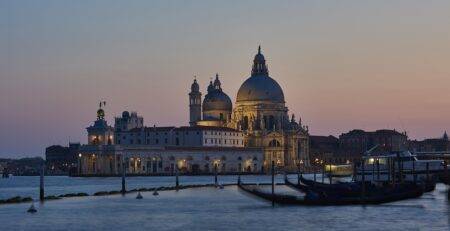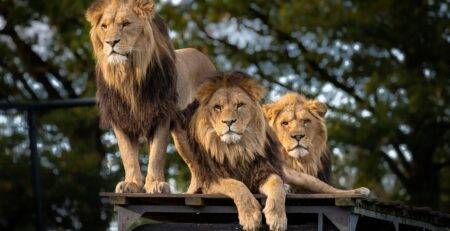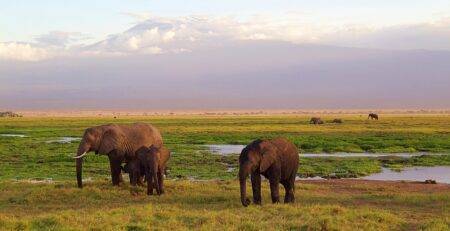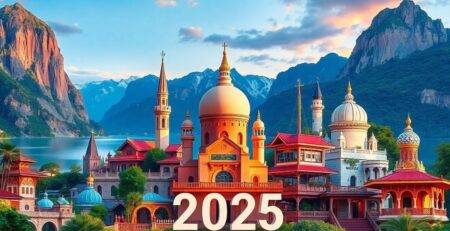I’ve been noticing a big shift in how people approach work trips lately. It seems like everyone is trying to get a little more out of their business travel, not just ticking off meetings but actually seeing new places. This trend, blending business and fun, is really taking off, and I think it’s something we’ll see a lot more of in 2025. So, I decided to look into this ‘bleisure travel’ phenomenon to see what it’s all about and how it might change things for us. bleisure travel 2025
Key Takeaways
- Bleisure travel, the mix of business and leisure trips, is growing fast. More people want to add fun to their work travel.
- This trend offers real benefits, like better work-life balance for employees and potential cost savings for companies.
- Companies are starting to see bleisure travel as a perk to attract and keep good employees, especially younger ones.
- To make the most of bleisure travel in 2025, planning is key. Think about where you’re going and how to balance your work and personal time.
- Travel agents can actually help a lot with planning these kinds of trips, making them smoother for everyone involved.
Understanding the Bleisure Travel Phenomenon

I’ve noticed a big shift in how people approach work trips lately. It’s not just about getting the job done anymore; there’s this growing desire to actually experience the places we visit for business. This trend, often called “bleisure,” is really changing the game for professionals and companies alike. It’s basically about mixing business with leisure, turning those mandatory work trips into opportunities for personal enjoyment and exploration.
The Emergence and Growth of Bleisure Travel
While combining work and fun isn’t a brand-new idea, it’s definitely picked up steam, especially after the pandemic. With more flexible work arrangements, people can actually extend their business trips to explore a new city or country. Studies show that travelers who add leisure time to their work trips report better work-life balance. It seems like a win-win: companies get their business done, and employees get a chance to recharge and see something new. This is why understanding what is bleisure travel is becoming so important for modern professionals.
What Constitutes Bleisure Travel?
So, bleisure travel meaning is pretty straightforward: it’s when you extend a business trip for personal leisure activities. Some people bring their families or friends along for the ride, while others simply add a few extra days after their meetings conclude. It’s about making travel more enjoyable and flexible. For instance, a significant portion of business travelers, around 60%, actively engage in bleisure activities. This approach makes the whole travel experience much richer.
The Shifting Landscape of Business Travel
The travel industry is definitely taking notice. Major players like Marriott and American Airlines have pointed out that bleisure travelers represent a growing segment. They’re even adapting their services and marketing to cater to this trend. This shift means that even those who didn’t travel for work much before are now on the road, and they’re often looking for ways to make their trips more enjoyable. Planning these trips requires a different approach, and having a good bleisure travel guide can be really helpful for figuring out the best bleisure travel destinations.
The rise of bleisure travel highlights a desire for more integrated life experiences, where professional obligations and personal enrichment can coexist harmoniously.
It’s interesting to see how companies are responding. Many are starting to see bleisure as a perk that can attract and keep good employees. Some are even considering offering stipends for personal vacation time added to business trips. This flexibility is a big draw, especially for younger generations like millennials and Gen Z, who often prioritize work-life balance and unique experiences. It’s clear that the way we think about business travel is changing, and bleisure trip planning is becoming a key skill for many.
Key Benefits of Bleisure Travel 2025

I’ve been thinking a lot lately about how to combine work and travel in 2025, and honestly, the benefits of bleisure travel are pretty compelling. It’s not just about squeezing in a bit of fun; it genuinely makes trips better for everyone involved.
Enhanced Work-Life Balance for Employees
This is a big one for me. When I can extend a business trip, even just for a day or two, it feels like a real perk. It means I can actually see a bit of the place I’m visiting, maybe grab a nice dinner or visit a museum, without feeling like I’m stealing time from work or my personal life. It makes the whole experience feel more sustainable. Plus, knowing my company supports this kind of flexibility makes me feel more valued.
Potential for Cost Savings
From a personal standpoint, combining leisure with business can definitely cut down on expenses. Instead of booking two separate trips – one for work and one for fun – I can often save on flights and accommodation by just extending my stay. It feels like a smart way to travel. I’ve heard some people save a good chunk of money each year this way.
Boosting Productivity and Creativity
Honestly, stepping away from my usual routine, even for a short while during a business trip, can be incredibly refreshing. Experiencing a new environment, even just for an evening, can spark new ideas. I find that when I return, I feel more energized and ready to tackle my work with a fresh perspective. It’s like a mini-recharge that pays off.
Attracting and Retaining Top Talent
I can see why companies are leaning into this. Offering bleisure travel as an option is a really attractive benefit. It shows that a company cares about its employees’ well-being and isn’t just focused on the bottom line. For me, that kind of flexibility is a major factor when considering where I want to work. It makes a company stand out, and I think it would make people want to stay longer.
It’s interesting how blending business and leisure can actually make work feel less like a chore and more like an opportunity to experience new things. It’s a win-win, really.
Here’s a quick look at why it’s so good:
- Better employee morale: People feel more appreciated and less burnt out.
- Cost efficiency: Saves money on travel for both employees and potentially companies.
- Fresh perspectives: New experiences can lead to better problem-solving at work.
- Competitive edge: Helps companies attract and keep good employees.
It’s clear that figuring out how to combine work and travel in 2025 is becoming a smart move for many. Finding cheap hotels in 2025 can make these extended trips even more affordable.
Bleisure Travel Market Growth and Statistics

The way I see it, the whole idea of combining business and leisure travel isn’t exactly brand new, but it’s really taken off lately. It feels like everyone’s talking about it, and the numbers back that up. The global bleisure travel market is projected to see some serious expansion. We’re looking at it growing from an estimated USD 762.01 billion in 2025 to a massive USD 1,713.69 billion by 2032. That’s a compound annual growth rate of 12.27%, which is pretty significant. Europe, in particular, seems to be a hotspot for this trend.
Projected Market Expansion
It’s not just one report saying this, either. Different market research firms are putting out similar figures, all pointing towards a big jump in the coming years. Some predict the market could grow by as much as 500% by 2033. This surge is driven by a few key things:
- A growing desire among employees for better work-life balance.
- The ongoing digital transformation within the travel industry, making planning easier.
- The general shift towards more flexible work arrangements.
Current Market Valuation
Right now, in 2025, the market is already substantial. Some estimates put the global bleisure travel market at around $430 billion, which is up from $394 billion in 2023. That’s a growth of about 9.3% year-over-year. It’s clear that this isn’t just a passing fad; it’s becoming a standard part of how people approach travel.
The practice of adding leisure time onto business trips is becoming more common. It allows professionals to make the most of their travel, explore new places, and feel better about their work-life balance.
Demographic Trends in Bleisure Travel
We’re seeing a real shift in who’s doing this. It’s not just a few adventurous types anymore. A good chunk of business travelers are now planning to extend their work trips for some fun. For example, one study showed a huge increase in professionals planning bleisure trips, with places like New Zealand seeing a 159% jump in these plans between 2022 and 2023. It seems like companies are starting to recognize the benefits, too, with many seeing it as a perk to attract and keep good employees. This trend is definitely reshaping how we think about corporate travel policies.
Integrating Bleisure into Corporate Travel Policies
When I think about how companies are handling travel these days, it’s clear that just sending people off for work isn’t enough anymore. I’ve seen firsthand how much employees appreciate it when their company is flexible. It’s not just about the trip itself, but about making the whole experience better.
The Role of Travel Agents in Bleisure
Travel agents are actually pretty important in all this. They can help sort out the details when someone wants to extend a business trip. Think about it: booking flights, hotels, maybe even a tour. A good agent can make sure the business part is covered and then help plan the fun part without any hassle. They’re like the glue holding the whole bleisure idea together for many.
Companies Embracing Bleisure as a Perk
I’ve noticed more and more companies are starting to see bleisure travel as a real perk. It’s a smart move, honestly. It shows employees that the company cares about their well-being and work-life balance. I read somewhere that a good chunk of younger workers, like Gen Z and millennials, actually pick jobs based on whether they offer this kind of flexibility. It’s a big deal for attracting and keeping good people.
Developing a Flexible Travel Policy
So, how do you actually make this work? It starts with a solid policy. I think companies need to be clear about what’s allowed. For example:
- Define eligibility: Who can extend their trips? Is it based on role, trip length, or performance?
- Outline expense guidelines: What costs does the company cover for the business portion, and what does the employee pay for the leisure part?
- Set communication protocols: How should employees request an extension, and what approvals are needed?
- Address safety and security: What are the company’s expectations for employees while they’re on personal time during a business trip?
It’s about finding that sweet spot where the company’s needs are met, and the employee gets to enjoy a bit of personal time. This balance is key to making bleisure travel a success for everyone involved.
Basically, it’s about being upfront and making the process easy. When I see a company that has clear guidelines, it makes me feel more confident about taking advantage of such opportunities.
Maximizing Your Bleisure Experience

So, I’ve been doing a lot of thinking about how to really get the most out of these bleisure trips. It’s not just about tacking on a couple of extra days; it’s about making the whole experience work for me, both professionally and personally. The key is thoughtful planning and a willingness to adapt.
Planning Extended Business Trips
When I know a business trip is coming up, I immediately start thinking about how I can extend it. This means looking at my work schedule and seeing where I can realistically add personal time without impacting my responsibilities. It’s about being proactive. I usually check flight and hotel availability for potential extension dates early on. Sometimes, just knowing I can extend it makes the business part feel less like a chore. It’s also smart to see if my company has any specific guidelines about extending trips, like how far in advance I need to request it or if there are any budget considerations for the personal days.
Choosing Destinations for Bleisure
This is where it gets fun. I try to pick destinations that offer something I’m genuinely interested in doing during my leisure time. If I have a conference in a city known for its hiking, I’ll definitely pack my boots. Or if I’m going somewhere with great museums, I’ll block out an afternoon to explore. It’s not always possible, of course, but when I can align the business location with a personal interest, it makes the whole trip much more rewarding. I’ve found some amazing budget-friendly travel destinations for 2025 this way.
Balancing Work and Leisure Activities
This is probably the trickiest part. I’ve learned that I can’t just wing it. I usually map out my work commitments first – meetings, presentations, that sort of thing. Then, I slot in my leisure activities around them. Sometimes, it means an early morning museum visit before a late afternoon meeting, or a nice dinner out after a full day of work. It’s a delicate dance. bleisure travel 2025
Here’s a rough idea of how I structure it:
- Day 1-2 (Business Focus): Arrive, attend meetings, focus on work tasks. Maybe a quick team dinner.
- Day 3 (Transition): Finish any urgent work, then transition to leisure. This could be a half-day of sightseeing or a relaxed evening.
- Day 4-5 (Leisure Focus): Fully dedicated to personal activities, exploring the destination, relaxing.
It’s important to set realistic expectations for yourself. You won’t be able to do everything, and that’s okay. Prioritize what matters most to you for both your work and your downtime.
Want to make your business trips more fun? Combining work and vacation, or ‘bleisure,’ is a great way to do it. You can explore new places and still get your work done. Ready to plan your next adventure? Visit our website to discover amazing destinations and tips for the perfect bleisure trip!
Wrapping Up Bleisure Travel in 2025

So, as I look back on how business travel has changed, it’s pretty clear that mixing work with a bit of fun, or ‘bleisure’ as we call it, is here to stay. It just makes sense, right? You get to see new places, maybe catch up with friends, and honestly, it makes those work trips feel a lot less like a chore and more like an opportunity. I’ve found that when I can add a day or two to explore, I come back feeling more refreshed and actually more productive. Plus, companies are seeing the upside too – happier employees who are more likely to stick around. It’s a win-win, really. If you haven’t tried it yet, I’d say give it a shot in 2025. Just plan a little, see what works for your trip, and enjoy the ride.
Frequently Asked Questions
What exactly is bleisure travel?
Bleisure travel is basically when I mix my work trips with some fun time. So, instead of just going to meetings and coming back, I might stay an extra day or two to explore the city, see some sights, or just relax. It’s like getting the best of both worlds! bleisure travel 2025
Why do I like bleisure travel so much?
I think it’s awesome because it makes my work trips way more enjoyable. It helps me feel less stressed and more balanced between my job and my personal life. Plus, sometimes I can save a little money on travel by extending my stay.
Do companies support this trend?
Many companies are starting to see that letting us do this makes us happier and more productive. It’s like a cool perk that makes me want to stay with a company. Some businesses even offer a little extra money to help us enjoy our leisure time.
How do I plan a bleisure trip?
It’s pretty simple, really. I plan my business trip as usual, and then I check if I can extend my stay. I might book an extra hotel night or two, and then I can go sightseeing or do whatever I enjoy in the new place. It’s all about planning ahead a bit. bleisure travel 2025
How do I choose a good destination for bleisure?
I try to pick places that have interesting things to see or do that I’d enjoy. It could be a city with great museums, a place with beautiful nature, or even just a city with good food. The key is to find somewhere that excites me for both work and fun.
How do I balance work and fun on my trip?
The trick is to make sure I get all my work done first. I set aside specific times for meetings and tasks, and then I plan my fun activities for the remaining time. It’s important to still be professional and responsible with my work duties.


